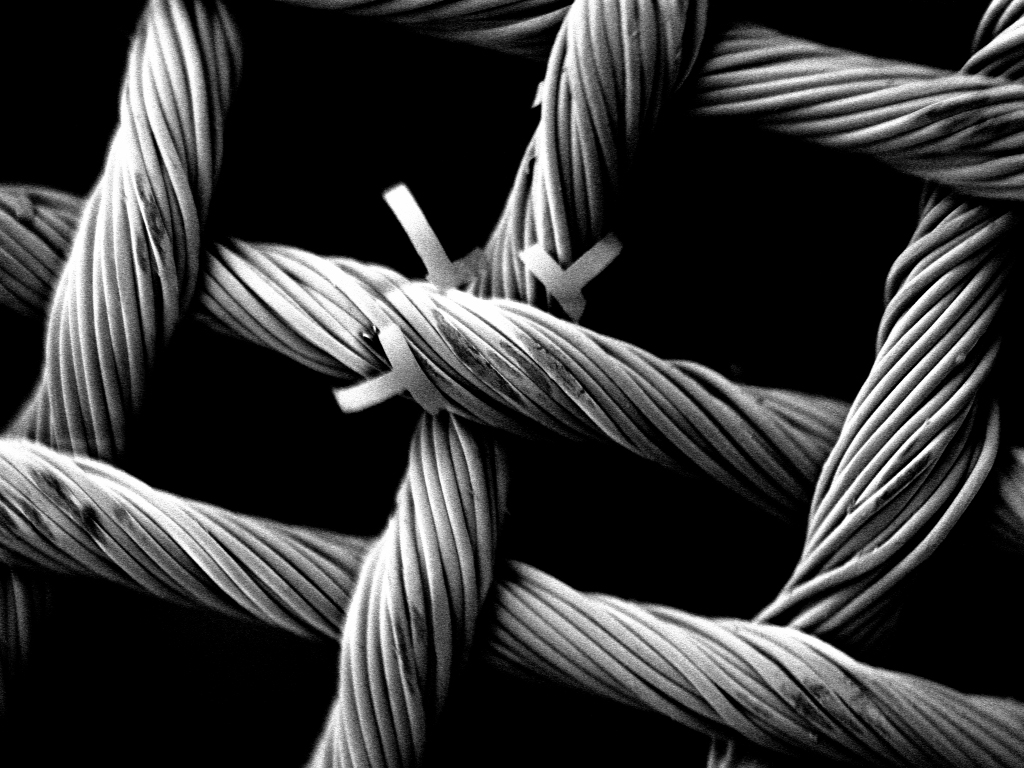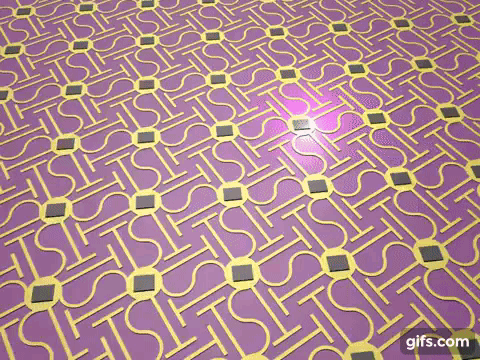
It’s the last week for most interns here, and it was a busy summer. Canisha has demonstrated that our pop-up microelectromechanical systems (MEMS) can interact with fabric fibers by curling around them. Thanks to a gentle etch process that does not damage fabrics, she was able to put nylon and polyester meshes into one of the silicon etching chambers, releasing the MEMS devices underneath. The overall goal? To transfer MEMS sensors and semiconductor circuits onto a flexible and porous support. Distortion-tolerant connectors and conformal device packaging are needed for wearable sensor systems that are built on fabrics.
These MEMS grippers are randomly aligned with the fabric, which can work as long as there are enough of them gripping. Integrating the fabric production with MEMS processing might even lead to the highly aligned system shown below. In both cases, the result is electronic circuit attached to a fabric on the underside with some connectors poking through the top of the material. This conductive path through the fabric thickness is more difficult to achieve with the thin polymer films that have previously been used with flexible electronics.

